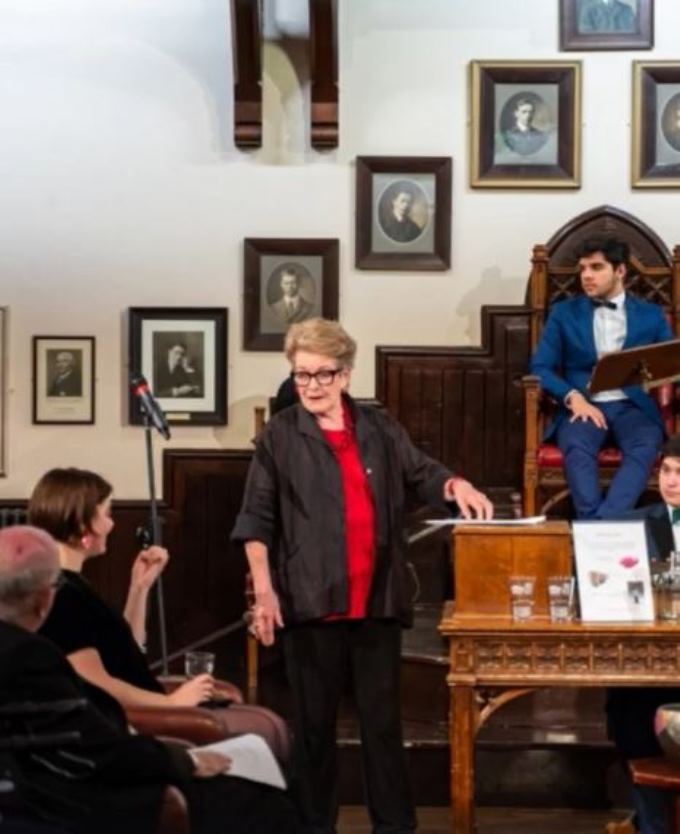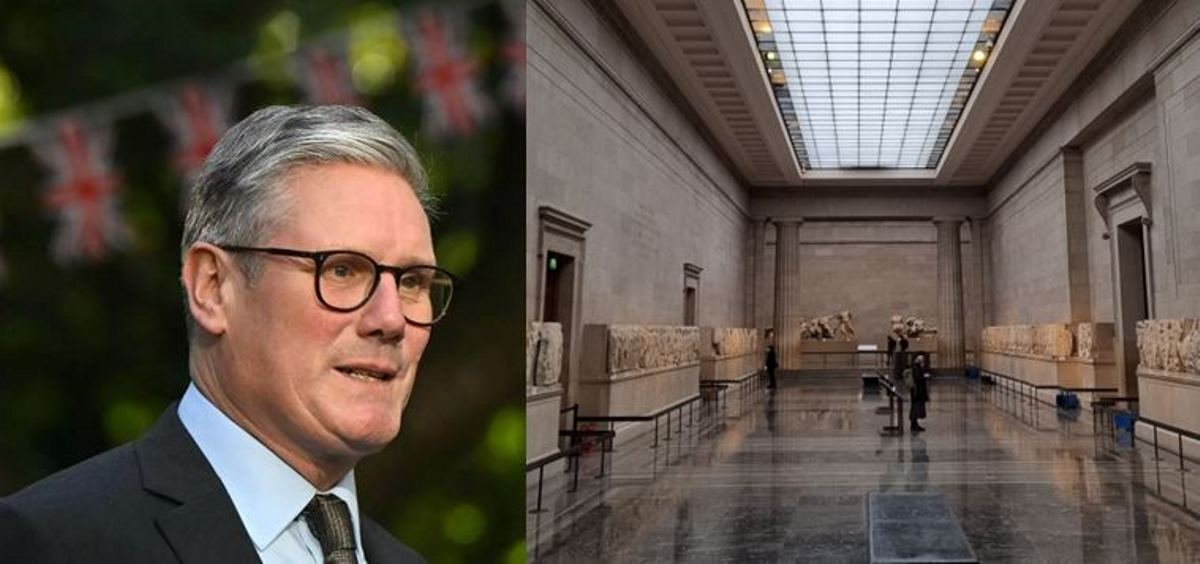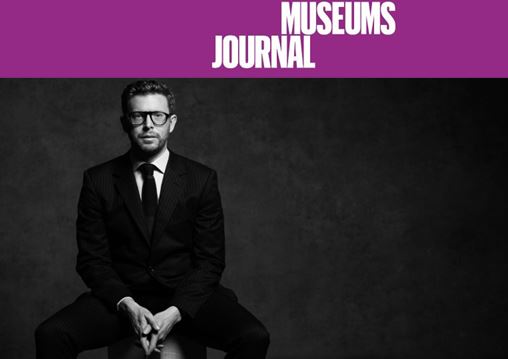Thursday 25 April 2019, Cambridge Union Debate
This House Would Return Looted Art Back to its Country of Origin
Proposition:
Alice Procter:
Alice is an independent tour guide and art historian, best known for running the often sold-out Uncomfortable Art Tours, telling the ‘ugly truth’ about the artefacts in Britain’s museums.
Dame Janet Suzman:
Dame Janet is a renowned actor and director of both stage and screen and an Academy Award nominee. She is currently co-Chair of the British Committee for the Reunification of the Parthenon Marbles, a significant lobby group working to ensure the Marbles’ return to Athens.
Professor Lord Colin Renfrew:
Hailed as, ‘The Great Restitutionist,’ Lord Renfrew is an archaeologist and Senior Fellow of the McDonald Institute for Archaeological Research. He is a former Master of Jesus College and a former President of the Union.
Opposition:
Dr. Kevin Childs
Kevin is a writer and lecturer on art history and has recently developed a series of pieces looking at the contribution to culture and history made by LGBT people over the millennia. He writes regularly for Independent Minds and the Independent.
Neil Curtis
Neil Curtis is Head of Museums and Special Collections at the University of Aberdeen. He is Convenor of University Museums in Scotland, Vice President of the Society of Antiquaries of Scotland and a member of the Ethics Committee of the Museum Association.
Lewis Thomas Lewis is a third-year historian at Sidney Sussex College.
Below Dame Janet Suzman's prsentation
Mr President, The burning of Notre Dame should remind us all how much a building can mean to a people.
Fellow debaters, ladies and gentlemen,
I am here pleading for some exquisite pieces of stone to be returned to their birthplace. They have been given shelter for 200 years and now they need to go home. They can no longer be kept hostages to time.
I am not the first by a long shot -
In 1986, Melina Mercouri - in a similar debate in what you no doubt call the Other Place - the Oxford Union - was tremendously moving on this special case - special because of what the Parthenon means to the Greeks…
…means to the world.
You might say all of Western culture is predicated on this building. It is the logo of UNESCO. Every classical building in the ancient - and modern world - springs from its genius.
It's where democracy was born.
And single-mindedly, incomprehensibly, a mere lordling from these isles cut bits off that edifice, which, so perfect in its symmetry, is a work of art in itself.
The temple tells the thrilling story of the pan-Athenaic procession - carved in relief by Phydias' incomparable team - surging at a gallop round the entire building; Olympians and their creatures once adorned the pediments.
These marbles were wrenched from a building that belonged - not to 'the one true god', not a tyrant, nor a king - but to the people.
And there - astonishingly - it still is. After two thousand years plus it still stands atop the sacred rock, bloody but unbowed, and in the eye-line of millions of Athenians going about their business down below. It is embedded in their national identity.
Imagine the dome of St Paul's sitting in Potzdammerplatz? A Stonehenge dolmen standing in the Tuileries - no, there IS no national equivalent here.
I was privileged to have had a meeting with His Excellency, President of the Hellenic Republic, Prokopios Pavlopoulos in Athens last Monday the 15th April, while I was attending a conference on the subject of these marbles.
He wanted to make a very clear point - that the Greek government has never asked for any other piece of statuary in any other museum in the world to be returned to them. And that it never would.
On the contrary, he said - the Greeks are very proud that the Louvre has the Winged Victory of Samothrace - they are happy to see it there.
They are NOT happy that Elgin attacked the Parthenon. They want their marbles back where they belong.
The British Museum, via the Dept of Culture, stays tight-lipped. That insulting silence is way past its sell-by date.
The reply to the President's latest request to re-consider by the Culture Secretary prompts me to offer him this simple advice: "Do NOT attempt to 'follow the logic of restitution to its logical conclusion', Mr Wright". Museum acquisitions were not exactly logically obtained, why should restitutions follow suit?
No slippery-slope-ism allowed; each case on its merits if you please.
--------------------------------------------------------
A brief reminder: Greece was under Ottoman occupation when Lord Elgin was appointed Ambassador to Athens.
Napoleon was invading Egypt. So, on the principle of 'my enemy's enemy is my friend' sacrificing the Parthenon's glories to Elgin's whims was probably for the Sultan a mere bagatelle.
However, exactly what 'glories' was Elgin allowed to take? Did the Sultanate specifically designate which?
Proofs, if they exist, have hitherto skulked in murky clouds of smoke and mirrors.
There is vague wording in an Italian transcript of a 'firman' - an official permission - in the Elgin archives - which give him leave to take 'qualque pezzi di pietra' - the word qualque indicating 'some' or 'a few pieces of stone'.
He was permitted to 'copy, draw, mould and dig' around the base of the Parthenon only.
Dr Tatiana Poulou, an archaeologist working on the Parthenon site today likened his depredations to the destruction by ISIS of Palmyra. That is, catastrophic.
Prof Dimitrios Pandermalis, Director of the New Acropolis Museum, understates these barbarisms of Elgin's as: 'at least surrealistic…' as he wryly points out the upper part of this horse and the lower legs of that.
Scholars have known, and further Turkish research has confirmed that there exist no permissions to take the friezes and pediments, and none to take down the metopes.
Hence this headline in the Greek edition of The NY Times: Dated April 16th - the day after my meeting with the President:
"Acropolis Museum director says Ottoman archives debunk the claim Lord Elgin had permission to remove sculptures".
The historian William St Clair knows more about the smoke and mirrors than anyone and is soon to publish his further findings, and I think he won't mind if I say that the headline above will not rock his boat.
-------------------------------------------------
Ladies and gentlemen - there is far too much to say about the manner of Elgin's acquisitions: his huge bribes to Ottoman high-ups, his trail of 'shattered desolation' - as a witness described the rape of the metopes - the ship that sank with the marbles aboard (Poseidon briefly rejoiced!), Elgin's bankruptcy forcing him to sell to the nation instead of hiding them in his Scottish pile. Yes…he had wanted them for himself!
Elgin was a terrible imperialist, but the truly colonial-imperial act was that of the British Parliament in 1816 in recognizing Elgin's title to his loot by buying it from him. That Act of Parliament thereby claimed 'ownership'.
But the BM is not a private company with a board of directors. Trustees are required solely to look after things entrusted to their care, not play at politics.
Does culture exist outside of politics? I think not.
Anyway, look, it's done. The BM has them.
The hornet's nest of Ottoman legalities still unravelling leads me to dwell rather on the NOW, not the THEN.
-----------------------------------------------------------
Post-World War II, international laws should surely persuade parliament to re-think its position?
Questions arise: does an occupying power have legitimacy to dispose of a vassal nation's heritage for the rest of history?
Should Britain own a mass of foreign heritage for the rest of time?
The ownership title that Britain exercises today surely should end at these shores?
The BM's Director, Hartwig Fischer, has developed a trope about separation being a 'creative act'. Well, he would, wouldn’t he? The Marbles are one of the BM's star attractions.
The Rodin show last year re-inforced the marbles' supremacy in execution and their diminished meaning in isolation.
The BM once said the Greeks couldn’t look after their own marbles. The stunning New Acropolis Museum opened all of ten years ago, with the Parthenon serenely in view from every glass-walled gallery. One of them empty of its own. But waiting…
We can't put Humpty together again but now you can visibly link the two - a revelation for visitors.
The BM is a great encyclopaedic institution - and the Aladdin's Cave of conquest.
There's a mood abroad that it must wake up to.
A revolt against colonialist attitudes.
The violence of the "Rhodes Must Fall" movement at Cape Town University made sure he did. That's the blunt end of hurt feelings.
The Museums Association takes a more nuanced and ethical approach. When the balance of power was so heavily skewed towards imperial authority, blunt 'no's are not enough, it says. Polls taken in 2012 are 73% for the return of sculptures to Greece.
The director of the Rijksmuseum recently said: "It's a disgrace that the Netherlands is only now attending to the return of colonial heritage…We should have done it earlier and there is no excuse".
Guidelines for their return, he suggests, intend to offer a framework similar to existing directives for Nazi loot claims.
The V & A is showing an open mind, Macron is thinking out of the box, St Mark's horses are back in Venice, Sweden has returned Icelandic Sagas, Easter Island will have its guardians back, Nigeria its Benin figures - and look! - the heavens have not fallen!
It is high time the BM showed us a heart within the beast. Make models for heavens sakes! - but do the right thing!
In the name of fairness and morality' said Melina in 1986 'please give them back. Such a gesture from Great Britain would ever honour your name'.






Comments powered by CComment